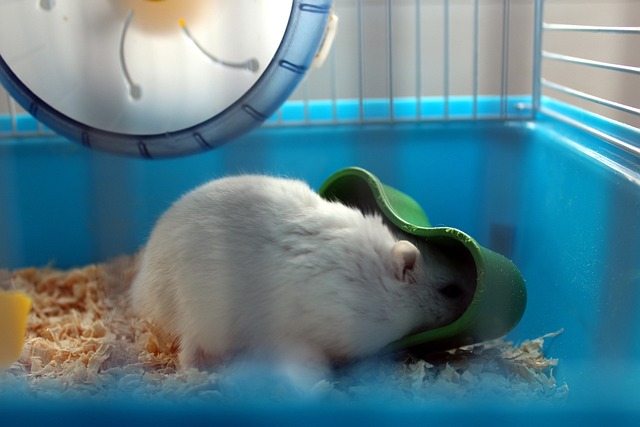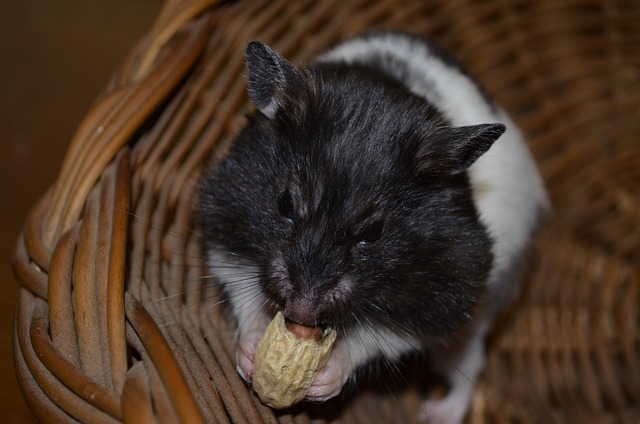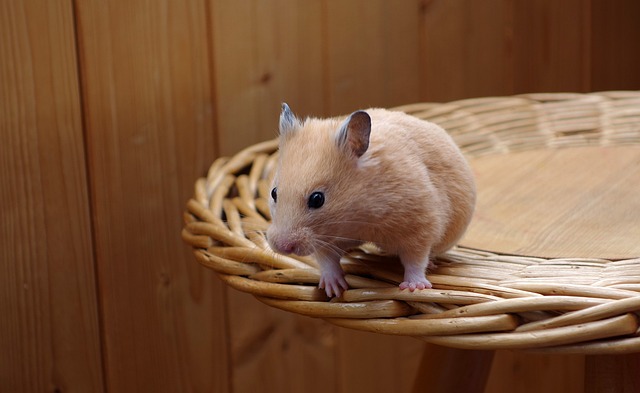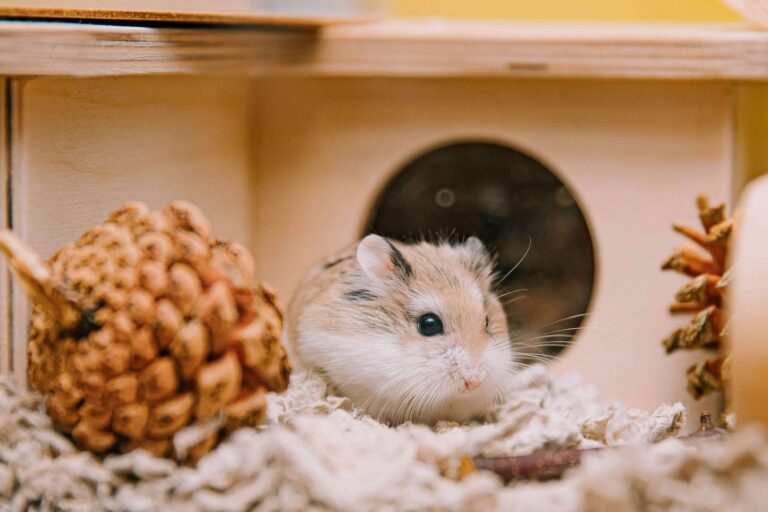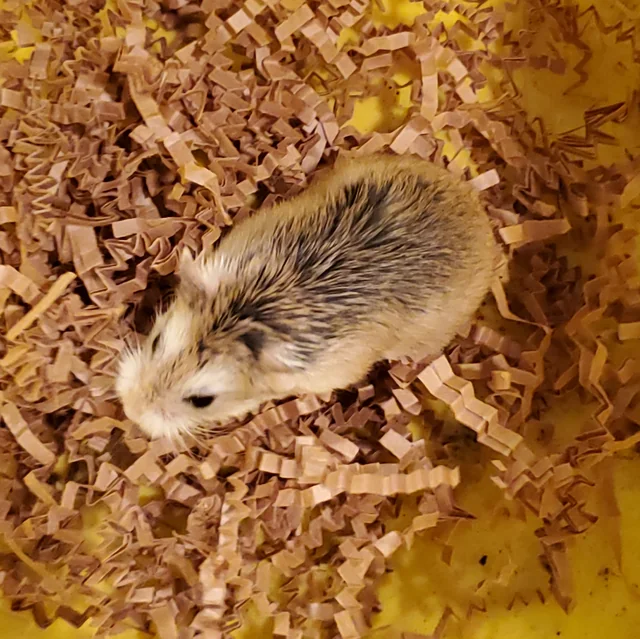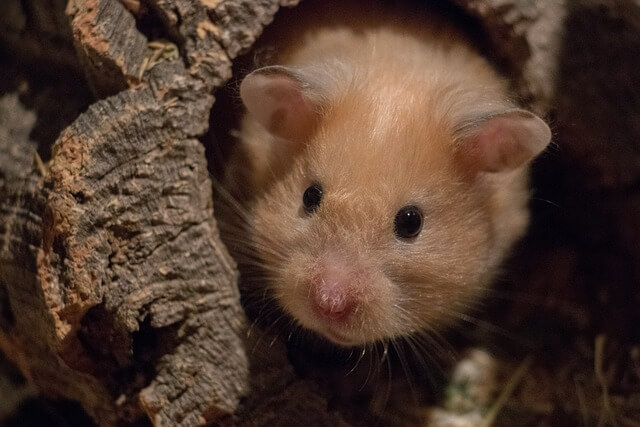Do hamsters Trust Humans – Hamsters.pk
Understanding Hamster Behavior: Recognizing Signs of Trust
Hamsters are adorable and popular pets known for their small size and cute appearance. As a hamster owner, it’s essential to understand your furry friend’s behavior and recognize the signs of trust they display towards you. Building a trusting relationship with your hamster not only enhances your bond but also ensures their overall well-being and happiness.
Observing Body Language
One of the most significant indicators of a hamster’s trust is their body language. When a hamster feels comfortable and secure around you, they will exhibit relaxed and confident body postures. Here are some signs to look out for:
- Relaxed ears: A trusting hamster will have their ears in a neutral position, not flattened against their head or pointing forward aggressively.
- Calm movements: A hamster that trusts you will move calmly and deliberately, without sudden, jerky movements or attempts to flee.
- Stretched out posture: When a hamster lies stretched out on its belly with its legs extended, it signifies a high level of comfort and trust in its surroundings.
Accepting Physical Contact
Hamsters are naturally skittish creatures, and it takes time for them to become comfortable with human touch. However, a trusting hamster will gradually allow and even enjoy physical contact with their owner. Look for these signs:
- Allowing petting: A hamster that trusts you will permit gentle petting on its back, head, and shoulders without flinching or trying to escape.
- Climbing on your hand: When a hamster willingly climbs onto your hand or up your arm, it demonstrates a significant level of trust and comfort in your presence.
- Enjoying scritches: Some hamsters, particularly when they feel secure, will enjoy gentle scratches behind their ears or on their cheeks.
Engaging in Playtime
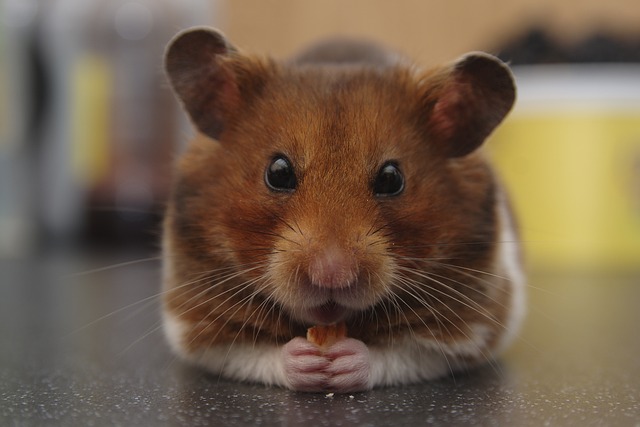
A trusting hamster will be more likely to engage in playtime activities with you. They may show interest in exploring their surroundings while you are nearby or even initiate playful interactions. Watch for these behaviors:
- Approaching you: A hamster that trusts you will confidently approach you during playtime, rather than hiding or running away.
- Accepting treats: When a hamster takes treats gently from your hand, it indicates a level of trust and comfort in your presence.
- Exploring without fear: A trusting hamster will explore its play area or hamster ball without showing signs of stress or fear, even when you are close by.
Responding to Your Voice
As your bond with your hamster grows, they may start to recognize and respond to your voice. A trusting hamster may:
- Perk up their ears: When you speak softly to your hamster, they may perk up their ears, indicating they are listening and focused on you.
- Come when called: Some hamsters, when they have developed a strong trust in their owner, may even come when called by name or a specific sound.
Building trust with your hamster takes time, patience, and consistency. By understanding and recognizing the signs of trust in your hamster’s behavior, you can foster a deeper, more rewarding relationship with your tiny companion. Remember to always approach your hamster gently, respect their boundaries, and provide them with a safe and comfortable living environment.
Building Trust with Your Hamster: A Step-by-Step Guide
Building a trusting relationship with your hamster is crucial for creating a strong bond and ensuring your pet’s happiness and well-being. Hamsters are naturally timid creatures, so it’s essential to approach the trust-building process with patience and understanding. Follow this step-by-step guide to foster a loving and trusting relationship with your furry friend.
Step 1: Create a Comfortable Environment
To build trust, your hamster needs to feel safe and secure in their surroundings. Ensure that their cage is appropriately sized, equipped with hiding spots, and filled with comfortable bedding material. Keep the cage in a quiet area of your home, away from loud noises and potential stressors.
Step 2: Allow Time for Adjustment
When you first bring your hamster home, give them time to adjust to their new environment. Avoid trying to handle them immediately, as this can cause undue stress. Instead, let them explore their cage and become familiar with their surroundings for a few days.
Step 3: Introduce Your Scent
Hamsters rely heavily on their sense of smell. To help your hamster become accustomed to your presence, place a small piece of cloth with your scent in their cage. You can sleep with a tissue or small cloth in your pillowcase for a night and then place it in your hamster’s cage. This will familiarize them with your scent and help them associate it with safety.
Step 4: Speak Softly and Calmly
When approaching your hamster’s cage, always speak in a soft, calm voice. Avoid making sudden, loud noises or movements that may startle them. Use a soothing tone and repeat gentle phrases, so your hamster becomes familiar with your voice.
Step 5: Offer Treats
Food is an excellent way to build trust with your hamster. Offer small, healthy treats through the bars of their cage, allowing them to approach and take the treat from your hand. Gradually move your hand closer to the cage floor as your hamster becomes more comfortable.
Step 6: Introduce Hand-Feeding
Once your hamster is comfortable taking treats from your hand through the cage bars, try placing a treat on your open palm and holding it inside the cage. Allow your hamster to approach and take the treat from your hand. This process helps them associate your hand with positive experiences.
Step 7: Begin Gentle Petting
After your hamster is comfortable with hand-feeding, try gently petting them while they eat. Start by lightly stroking their back or head with one finger. If your hamster remains calm and continues eating, you can gradually increase the contact.
Step 8: Practice Handling
When your hamster is comfortable with petting, you can start practicing handling. Carefully scoop them up using both hands, supporting their body and allowing them to feel secure. Hold them close to your body and continue speaking in a soothing voice. Keep handling sessions brief at first, gradually increasing the duration as your hamster becomes more relaxed.
Step 9: Engage in Play
Playtime is an excellent opportunity to strengthen your bond with your hamster. Create a safe, enclosed play area and allow your hamster to explore while you sit nearby. Offer toys and obstacles for them to interact with, and encourage them to approach you by offering treats.
Step 10: Be Patient and Consistent
Building trust with your hamster takes time and consistency. Be patient throughout the process and never force interactions if your hamster appears stressed or uncomfortable. Consistently engage in positive interactions, such as hand-feeding and gentle petting, to reinforce the trust you’ve established.
By following these steps and providing a loving, patient approach, you’ll be well on your way to building a strong, trusting bond with your hamster. Remember, every hamster is unique, and some may take longer than others to develop trust. Stay committed to the process, and enjoy the rewarding experience of earning your hamster’s love and affection.
Factors Influencing a Hamster’s Trust in Humans
Hamsters are social animals that can form strong bonds with their human companions. However, building trust between a hamster and its owner is a gradual process that depends on various factors. Understanding these factors can help you create a positive and nurturing environment for your pet, fostering a trusting relationship. Let’s explore the key elements that influence a hamster’s trust in humans.
Consistency and Routine
Hamsters thrive on consistency and routine. Establishing a regular schedule for feeding, playtime, and cleaning can help your hamster feel secure and comfortable in their environment. Consistently providing fresh food and water, as well as maintaining a clean living space, demonstrates your reliability and care for their well-being.
Gentle Handling and Interaction
The way you handle and interact with your hamster significantly impacts their trust in you. Always approach your hamster calmly and gently, avoiding sudden movements or loud noises that may startle them. Use a soft, soothing voice when speaking to your pet, and allow them to approach you on their own terms. Gentle petting and hand-feeding can help your hamster associate your presence with positive experiences.
Respecting Their Personal Space
Hamsters are territorial animals that value their personal space. It’s crucial to respect your hamster’s boundaries and not force interactions when they are not in the mood. Provide them with a cage that includes hiding spots, such as tunnels or small houses, where they can retreat when feeling overwhelmed or seeking solitude. Allowing your hamster to have control over their environment and interactions fosters a sense of security and trust.
Positive Reinforcement and Treats
Positive reinforcement is a powerful tool in building trust with your hamster. Offering small, healthy treats during interactions can help your pet associate your presence with pleasant experiences. Reward your hamster for positive behaviors, such as approaching you or allowing gentle petting, to encourage trust and bonding. Remember to keep treats in moderation to maintain a balanced diet.
Socialization and Playtime
Regular socialization and playtime are essential for strengthening the bond between you and your hamster. Create a safe, enclosed play area where your hamster can explore and interact with you. Offer toys and obstacles that encourage mental stimulation and physical activity. Spending quality time with your hamster during playtime helps them feel secure and trusting in your presence.
Patience and Understanding
Building trust with a hamster requires patience and understanding. Each hamster has a unique personality and may have different levels of comfort with human interaction. Some hamsters may be naturally more outgoing, while others may take longer to warm up to their owners. It’s essential to respect your hamster’s individual pace and not rush the trust-building process. Consistently providing a safe, nurturing environment and positive interactions will help your hamster gradually develop trust over time.
Minimizing Stressors
Hamsters are sensitive to stress, which can hinder the trust-building process. Minimize potential stressors in your hamster’s environment, such as loud noises, bright lights, or excessive handling. Ensure that their cage is located in a quiet, calm area of your home, away from drafts and direct sunlight. Providing a stable, stress-free environment allows your hamster to feel secure and more open to trusting you.
Building trust with your hamster is a rewarding journey that requires dedication, patience, and understanding. By considering these factors and creating a nurturing environment for your pet, you can foster a strong, trusting bond that will bring joy and companionship to both you and your hamster. Remember, every hamster is unique, and the trust-building process may vary. Consistently providing love, care, and respect will help your hamster feel safe and valued, paving the way for a lifelong friendship.
The Benefits of a Trusting Relationship Between Hamsters and Their Owners
Developing a trusting relationship with your hamster is not only rewarding but also offers numerous benefits for both you and your furry companion. When a hamster trusts its owner, it leads to a happier, healthier, and more fulfilling life for the pet, while also providing joy and companionship to the owner. Let’s explore the various advantages of fostering a trusting bond between hamsters and their human caregivers.
Reduced Stress and Anxiety
Hamsters that trust their owners experience lower levels of stress and anxiety. When a hamster feels secure and comfortable in the presence of its owner, it is less likely to exhibit fear-based behaviors such as hiding, biting, or excessive cage bar chewing. A trusting relationship promotes a sense of safety and calmness, allowing your hamster to relax and enjoy its surroundings.
Enhanced Social Interaction
A trusting bond encourages more positive social interactions between hamsters and their owners. When a hamster trusts you, it is more likely to approach you willingly, seek out your attention, and engage in playful activities. This enhanced social interaction provides mental stimulation and enrichment for your pet, contributing to their overall well-being and happiness.
Improved Health and Well-being
Hamsters that have a trusting relationship with their owners tend to be healthier and have a higher quality of life. Trust enables you to handle your hamster more easily, allowing for regular health checks, grooming, and necessary veterinary care. A trusting hamster is also more likely to accept new foods, toys, and changes in its environment, promoting a diverse and enriching lifestyle.
Increased Bonding and Companionship
Building trust with your hamster deepens the bond and companionship between you and your pet. When your hamster trusts you, it seeks out your company and enjoys spending time with you. This strong bond provides a sense of fulfillment and joy for both the hamster and the owner, creating a mutually beneficial and rewarding relationship.
Easier Training and Behavior Modification
Trust is a foundation for successful training and behavior modification in hamsters. When your hamster trusts you, it is more receptive to learning new behaviors and responding to positive reinforcement. This trust allows you to teach your hamster tricks, encourage the use of toys and exercise equipment, and address any undesirable behaviors more effectively.
Reduced Likelihood of Biting
Hamsters that trust their owners are less likely to bite out of fear or aggression. Trust eliminates the need for defensive behaviors, as your hamster understands that you pose no threat. This reduced likelihood of biting makes handling and interacting with your hamster safer and more enjoyable for both parties.
Enhanced Mental Stimulation
A trusting relationship fosters an environment where your hamster feels secure enough to explore, play, and engage with its surroundings. When a hamster trusts its owner, it is more likely to venture out of its hiding spots, investigate new toys and objects, and participate in mentally stimulating activities. This enhanced mental stimulation contributes to your hamster’s cognitive health and overall well-being.
Improved Quality of Life
Ultimately, a trusting relationship between a hamster and its owner leads to an improved quality of life for the pet. A hamster that feels safe, secure, and loved is more likely to thrive, experiencing reduced stress, increased happiness, and a stronger bond with its human companion. This improved quality of life is the most significant benefit of fostering trust between hamsters and their owners.
Building a trusting relationship with your hamster requires patience, consistency, and understanding. By providing a safe and nurturing environment, engaging in positive interactions, and respecting your hamster’s individual needs, you can cultivate a bond that offers numerous benefits for both you and your beloved pet. The rewards of a trusting relationship between hamsters and their owners are immeasurable, creating a lifetime of joy, companionship, and mutual understanding.
